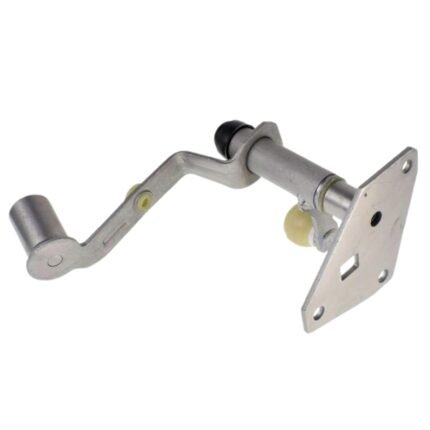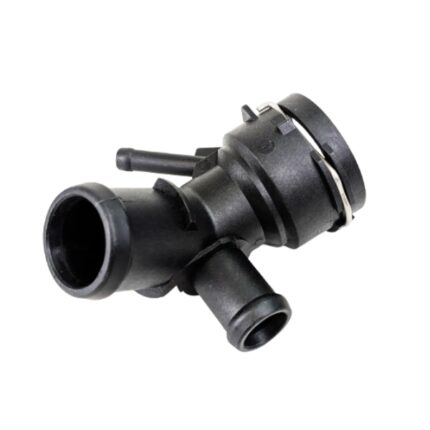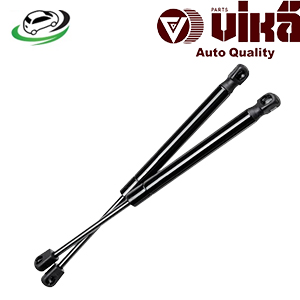Get VW Golf 1.8L/ Golf 1.9L/ Golf 2.0L/ GTI 1.8L/2.8L VR6/ Jetta 1.8L/1.9L/ Passat 1.8L Boot Trunk Gas Spring Strut 1J6827550E
The boot trunk gas spring strut, often referred to as the trunk lift support or gas strut, is a critical component of a vehicle’s rear hatch or trunk lid mechanism. It is designed to aid in the opening, closing, and stabilization of the trunk lid, ensuring smooth, controlled movements without requiring excessive effort from the user. This detailed guide explores the function, benefits, common issues, and maintenance of the boot trunk gas spring strut.
What is a Boot Trunk Gas Spring Strut?
A boot trunk gas spring strut is a type of gas-filled hydraulic cylinder that helps lift and support the weight of a vehicle’s trunk lid or tailgate. It consists of a piston within a sealed cylinder, filled with pressurized gas (usually nitrogen) and sometimes a small amount of oil for damping. When the trunk is opened, the gas expands, pushing the piston out of the cylinder and lifting the trunk lid. When closing, the strut compresses, allowing the trunk to be shut with minimal force.
The gas strut works much like a spring but provides smoother and more controlled motion. Without the gas spring strut, the trunk lid would be much harder to open and could slam shut abruptly, posing a safety risk.
Function of the Boot Trunk Gas Spring Strut
The primary function of the boot trunk gas spring strut is to assist in the controlled movement of the trunk lid. Here’s a detailed breakdown of its functions:
- Lifting Assistance:
One of the main functions of the gas spring strut is to assist in lifting the trunk lid. It takes the weight of the lid off the user, making it easy to open with just a light push or pull. This is especially useful for heavier trunk lids or tailgates, such as those found on SUVs or trucks. - Stabilization and Holding:
Once the trunk is open, the gas strut holds the trunk lid in place. This ensures that the lid stays open and doesn’t fall back down unexpectedly, which can be a safety hazard. The strut stabilizes the lid at any point in its range of motion, keeping it securely in the desired position. - Dampening the Closing Process:
When the trunk is closed, the gas spring strut ensures a smooth, controlled descent of the lid. It prevents the trunk from slamming shut, which could damage the vehicle or cause injury to the user. The strut provides resistance, allowing the trunk to close gently. - Reducing Strain on Hinges and Mounting Points:
The gas strut reduces the overall strain on the trunk lid’s hinges and mounting points by distributing the force needed to lift and lower the lid. This extends the life of these components and prevents wear and tear that could lead to costly repairs.
Types of Boot Trunk Gas Spring Struts
- Standard Gas Spring Strut:
This is the most common type of trunk strut, used in most vehicles. It provides a smooth, balanced force that aids in the opening and closing of the trunk lid. The standard strut is typically non-adjustable, meaning it is designed to provide a specific amount of lift based on the trunk lid’s weight. - Lockable Gas Spring Strut:
In some vehicles, especially SUVs or wagons with large, heavy tailgates, lockable gas struts are used. These struts can lock in place at certain points, providing additional safety by ensuring the trunk lid stays in a fixed position even under stress or vibration. - Adjustable Gas Spring Strut:
Adjustable gas struts are used in applications where the trunk lid’s weight or desired force may vary. These struts allow for some level of customization of the lift force, either by adjusting the gas pressure or the internal components. While not as common in standard vehicles, they are often found in specialized or heavy-duty applications.
Benefits of a Properly Functioning Boot Trunk Gas Spring Strut
- Ease of Operation:
A functioning gas spring strut makes opening and closing the trunk lid effortless. Instead of needing to lift the full weight of the trunk, the user only needs to apply a small amount of force, and the gas strut will do the rest. - Improved Safety:
A properly functioning gas strut ensures that the trunk lid does not fall unexpectedly or slam shut. This is particularly important in preventing injuries, especially to children or those unaware of the dangers of a falling trunk lid. - Prevents Damage to the Vehicle:
A gas strut also protects the vehicle itself by preventing the trunk lid from slamming against the body of the car. Sudden, uncontrolled closures can cause dents, scratches, or even damage to the locking mechanism. - Enhanced User Experience:
With smooth and controlled operation, the gas strut improves the overall experience of using the vehicle’s trunk. Whether loading or unloading items, the ease of access provided by the gas strut adds convenience, especially in larger vehicles. - Extended Component Life:
By reducing the amount of strain placed on the trunk hinges, mounting points, and other components, a properly functioning gas strut extends the life of these parts. This leads to fewer repairs and lower maintenance costs over the life of the vehicle.
Common Issues with Boot Trunk Gas Spring Struts
- Loss of Gas Pressure:
Over time, gas spring struts can lose pressure due to leaks in the cylinder seals or natural degradation of the gas inside. When this happens, the strut will lose its ability to support the trunk lid, making it harder to open and more likely to fall closed unexpectedly. - Corrosion and Rust:
Like many vehicle components, gas struts are susceptible to rust and corrosion, especially if they are exposed to moisture or road salt. Corrosion can weaken the cylinder, leading to failure or decreased performance. - Stiff or Seized Piston:
The piston inside the gas spring strut can become stiff or seize up due to lack of lubrication, dirt, or debris entering the cylinder. This can make it difficult to open the trunk or cause the strut to fail completely. - Mechanical Damage:
Physical damage to the gas strut, such as bending or denting of the cylinder, can render it inoperative. Damage can occur from impacts, accidents, or improper use of the trunk lid. - Wear and Tear on Mounting Points:
The mounting points where the gas strut attaches to the vehicle can wear out over time. This can cause the strut to become misaligned or detached, reducing its effectiveness and potentially causing further damage to the trunk lid.
Maintenance Tips for Boot Trunk Gas Spring Struts
- Regular Inspection:
Periodically inspect the gas struts for signs of wear, corrosion, or damage. Look for leaks, rust, or any stiffness in the operation. Catching problems early can help prevent complete failure. - Clean the Strut:
Keep the gas spring strut clean and free from debris. Dirt and grime can interfere with the piston’s movement and accelerate wear. A simple wipe-down with a clean cloth can help extend its life. - Lubricate the Hinges and Mounts:
While the gas strut itself does not typically require lubrication, the hinges and mounting points should be lubricated regularly. This helps reduce friction and wear, ensuring smooth operation of the trunk lid. - Replace Worn or Failing Struts:
Gas spring struts are not designed to last forever. If the strut begins to lose pressure, become stiff, or fail to hold the trunk lid open, it’s time to replace it. Most gas struts are relatively inexpensive and easy to replace. - Avoid Overloading the Trunk Lid:
Excessive weight placed on the trunk lid, such as adding accessories or roof racks, can strain the gas strut and reduce its effectiveness. Be mindful of how much weight the strut is designed to support, and avoid exceeding that limit. - Check for Alignment Issues:
If the trunk lid is not opening or closing smoothly, it may be due to misalignment of the gas strut or trunk components. Ensure that the gas strut is properly aligned with the trunk hinges and mounting points to prevent wear or damage.
Symptoms of a Failing Boot Trunk Gas Spring Strut
- Difficulty Lifting the Trunk Lid:
If you notice that the trunk lid is becoming harder to lift or requires more effort than usual, it could indicate that the gas strut is losing pressure and failing to provide the necessary assistance. - Trunk Lid Not Staying Open:
One of the clearest signs of a failing gas strut is when the trunk lid no longer stays open on its own. If the lid starts to fall closed, it’s a sign that the strut has lost its ability to support the weight of the lid. - Noisy or Jerky Operation:
A properly functioning gas strut should operate quietly and smoothly. If you hear unusual noises like creaking, squeaking, or notice that the trunk opens in a jerky manner, it may be due to a failing gas strut. - Visible Signs of Wear or Damage:
Check for visible signs of wear, such as corrosion, rust, or oil leaks from the cylinder. These are indicators that the gas strut is nearing the end of its life and needs to be replaced.
Conclusion
The boot trunk gas spring strut is an essential component of a vehicle’s trunk lid mechanism, providing ease of use, safety, and convenience. By assisting in the lifting, stabilization, and controlled closing of the trunk lid, it plays a vital role in the functionality of the vehicle. Regular maintenance and prompt replacement of failing struts are key to ensuring that the trunk operates smoothly and safely for years to come.
Follow us on Facebook for more parts.




Reviews
Clear filtersThere are no reviews yet.